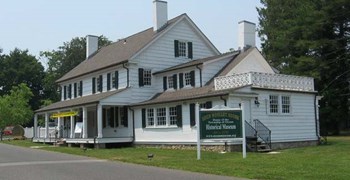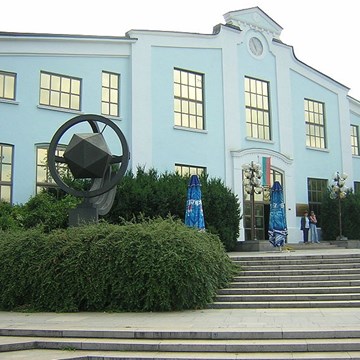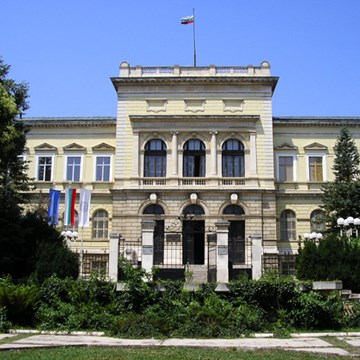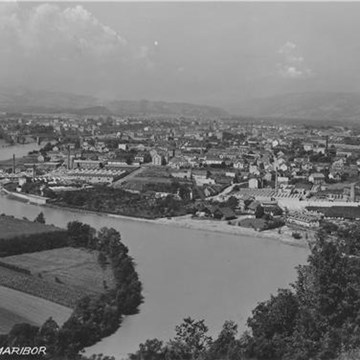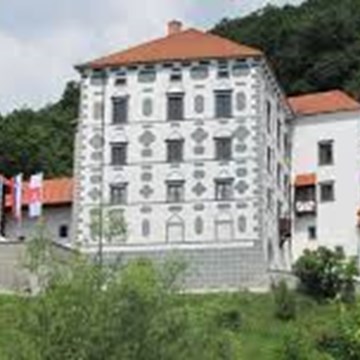Deal Test Site: 100 Years of History
Bounded by Deal Road, Whalepond Road, and Dow Ave., the 208 acres we know today as Joe Palaia Park were once the Deal Test Site, an internationally renowned research facility.
The same buildings that park visitors pass by today once held scientists from AT&T’s Western Electric research arm (later known as Bell Labs) working on telecommunication breakthroughs that made history. Later in those same buildings, the U.S. Army Signal Corps ran satellite tracking operations that attracted scientists from around the world.
The exhibit traces the site’s history from prehistoric times to today, focusing on the 100 years since AT&T chose rural Ocean Township as an ideal spot to conduct its experiments in wireless communications.
The AT&T years
As World War I ended, AT&T looked to extend telephone service beyond the reach of its telephone wires, specifically to ships at sea. It searched for and found the perfect location for a research laboratory. In 1919, it purchased the 63-acre Foxhurst Farm along Whalepond Road in Ocean. By the end of the year, three 165’ towers were in place and the experiments in wireless communications began.
Landmark work in radio, short-wave, and micro microwave communication and radar followed.
In the early 1920s, Deal Test Site’s experimental radio station is believed to have broadcast music for entertainment for the first time anywhere. As part of the research, wicker push-chairs on the Asbury Park boardwalk were equipped with receivers to pick up signals.
In the winter of 1920-1921, Deal Test Site completed another first. A ship in the Atlantic connected by radio to Deal, and by wire from Deal to California, and by radio again to Catalina Island in the Pacific.
In the mid-1920s, the world’s first highpower short-wave amplifiers were built on the site. A transmitter at Deal was used in the first commercial short-wave radio telephone link with England.
In 1929, the site was expanded to its current 208 acres and three new 175’ towers were constructed to support short-wave antennae. (Four of the total six early towers remain. The fifth tower in the park today is a modern cell phone installation.)
In the 1930s and 1940s, the research that produced the microwave relay stations that became the backbone of the long distance telephone network was conducted at Deal. During World War II, scientists at the site turned their attention to radar that could be carried aboard planes and ships.
After the War, Deal became increasingly overshadowed by other AT&T research centers. In 1953, AT&T closed operations and sold the property. There was talk of developing the land for housing, but in the end the U.S. Army Signal Corps leased the facility as an outpost of its Ft. Monmouth (Eatontown) operations.
Under the Signal Corps
As the U.S. and U.S.S.R. raced to launch the first artificial satellite into space, the Signal Corps at Deal Test Site had a mission: Develop the capability to track the highly anticipated “manmade moons.”
On Oct. 4, 1957, the U.S.S.R. stunned the world with the successful launch of its Sputnik. The specialized antennae at Deal Test Site went into action. They had the unique capability to pinpoint the source of radio signals being broadcast from the Russian satellite. Around the clock, engineers (who called themselves the “Royal Order of Sputnik Chasers”) worked without overtime pay to detect and record Sputnik’s signals.
The Signal Corps continued 24/7 satellite tracking from the site well into the next decade. Remnants remain of the concrete pads where massive dish antennae monitored all launches from Cape Canaveral. In the early 1960s, Deal participated in the Courier satellite experiments in transatlantic communication. From Deal, the Courier satellite relayed the first-ever fax transmission of a photograph.
By the early 1970s, NASA had created its own satellite tracking facilities, and in 1973, Deal Test Site was closed. Again, the prospect of developing the land for housing (more than 300 homes) loomed. A dedicated group of volunteers led the campaign to turn the historic site, instead, into parkland.
Purchased for parkland
In 1973, with a matching state Green Aces grant, the Township purchased the 208 acres for $1.9 million. And for the past 45 years, the park has served the public as a natural and recreational resource.
In 1997, Deal Test Site was renamed in honor of Joe Palaia, the Township’s mayor at the time of the park’s acquisition and later a state senator who helped secure funding for the park’s development.
Exhibitions and events
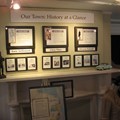
The Permanent Exhibits in the Our Town Gallery
Permanent exhibitionThe Pre-Colonial Era This area of New Jersey was originally occupied by the Lenni-Lenape tribe (also known as the Delaware to Europeans) a part of the Algonquin nation. The Lenni-Lenape traveled...
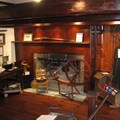
The Permanent Exhibits in the Hearth and Home Gallery
Permanent exhibitionThe Hearth and Home Gallery is located in the section of the Museum that was the original portion of the Woolley House. The room that is the Gallery today, was built in the 1700's and the beams,...
Activities from this museum
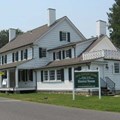
Third Grade History Program
The Township of Ocean Historical Museum has, since 1985, been providing...
